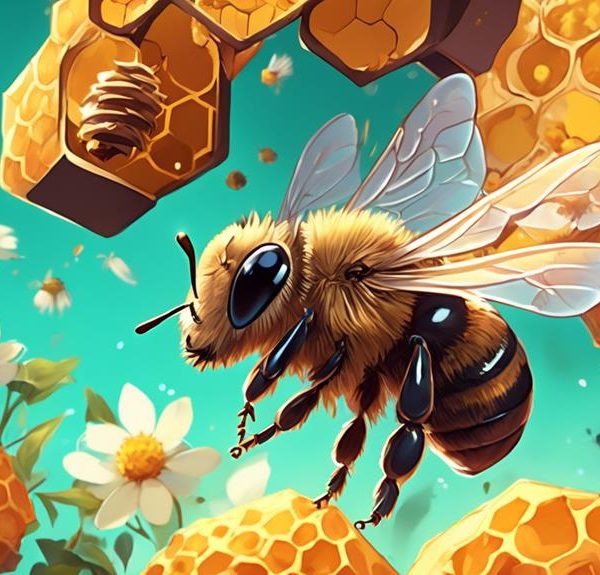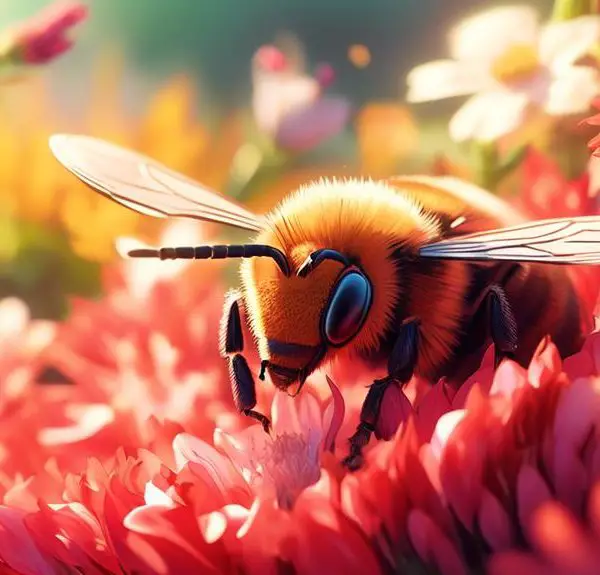Kicking off a journey into the intriguing world of parasitic wasps and mason bees, this article explores their surprising and often brutal interaction.
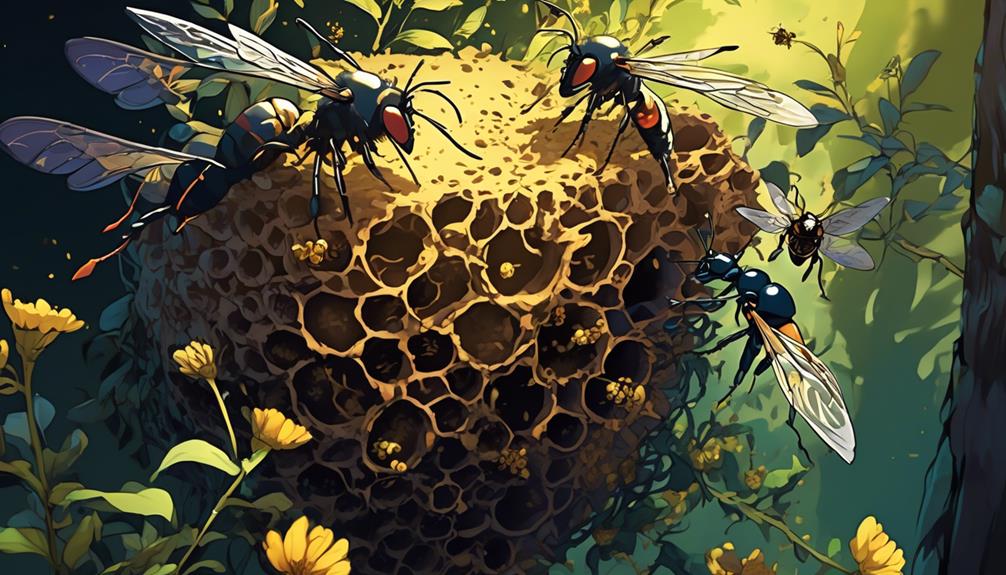
Do Parasitic Wasps Eat Mason Bees?
The world of insects is a battlefield, where survival is often the name of the game. You might wonder, do parasitic wasps, the stealthy assassins of this world, consume mason bees? It's a curious question, isn't it?
After all, nature's complexity never fails to surprise us with its macabre yet fascinating interactions. Let's examine the nature of these creatures, their interplay, and the strategies they employ in their struggle for existence.
You're about to unravel a tale that might change your perception of these seemingly insignificant creatures.
Key Takeaways
- Parasitic wasps lay eggs inside mason bee eggs or larvae, using them as hosts for their own young.
- The larvae of parasitic wasps consume and feed on developing mason bees, impacting their populations.
- This relationship between parasitic wasps and mason bees exerts natural selection pressures on the bees.
- The decline of mason bees due to parasitic wasps can disrupt ecosystem balance, affecting plant reproduction and the food supply for various species.
Understanding Parasitic Wasps
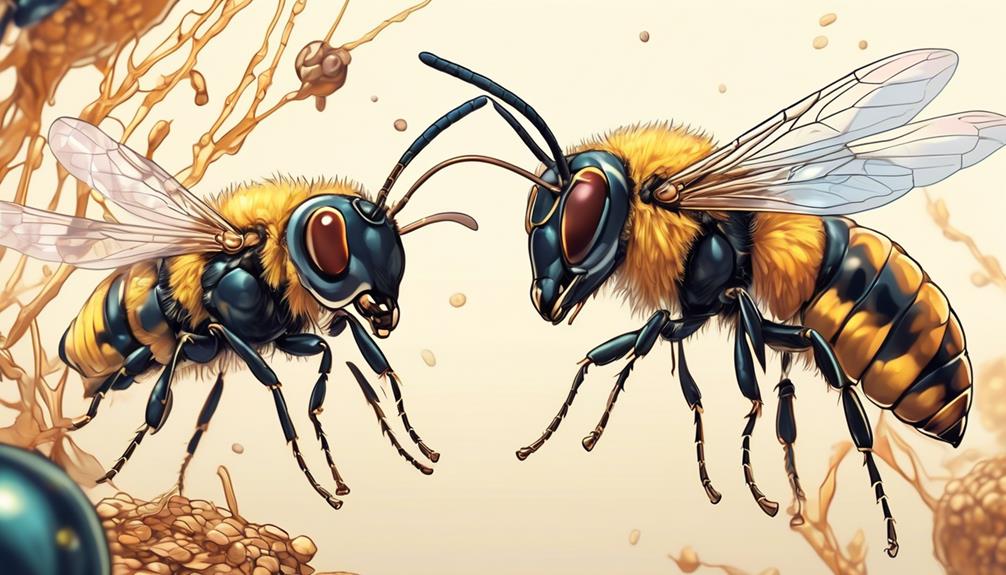
Let's delve into the world of parasitic wasps, fascinating insects that, despite their name, play a crucial role in maintaining ecological balance.
You might be wondering, what's so special about these tiny creatures? Well, parasitic wasps are unique in their life cycle and feeding habits. They don't eat their host, instead, they lay their eggs inside them. The larva hatches, consumes the host from within and ultimately kills it, paving the way for a new wasp to emerge.
There's more to these wasps than just their parasitic nature. They're biological control agents, keeping pest populations in check. If you're into gardening, you'd appreciate their role in getting rid of pests. They target many species that harm crops, contributing to a healthy ecosystem and reducing the need for chemical pesticides.
But it's not all rosy. These wasps can have adverse effects too. When their populations get out of control, they can disrupt the balance, causing harm to beneficial insects, like mason bees. It's a tightrope walk, balancing their benefits and drawbacks. But that's nature's way, isn't it? Complex, intricate, and endlessly fascinating.
Life Cycle of Mason Bees
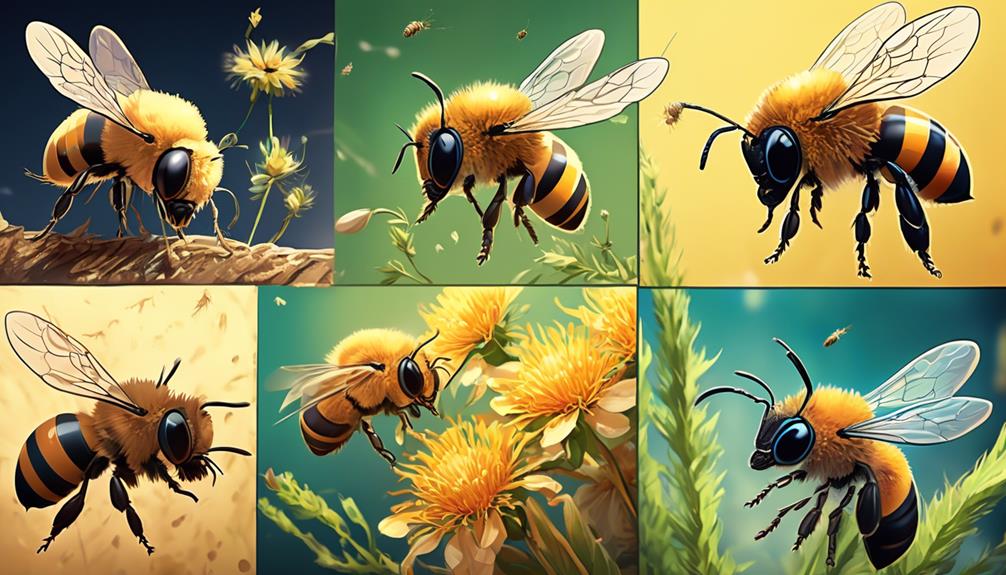
Diving into the life cycle of mason bees, you'll find a four-stage process that includes egg, larva, pupa, and adult, each stage offering a unique glimpse into their fascinating existence.
The cycle starts when a female mason bee lays an egg in a tubular cell made of mud. She then collects pollen and nectar, which she stores in the cell for the developing larva to feed on.
The second stage, larva, is marked by growth and development. The larva feeds on the stored pollen and nectar until it's fully grown. Then, it spins a cocoon around itself and enters the pupal stage.
During the pupa stage, you'll witness a remarkable metamorphosis where the bee's body undergoes drastic changes – it changes from a worm-like creature into a fully formed bee.
The final stage is the adult stage. Here, the fully formed mason bee emerges from the cocoon and begins to forage for food, mate, and start the cycle all over again.
The lifespan of an adult mason bee is short, typically around four to six weeks, with females living slightly longer than males. Their short life, however, is marked by industrious activity and crucial roles in pollination.
Interaction Between Wasps and Bees
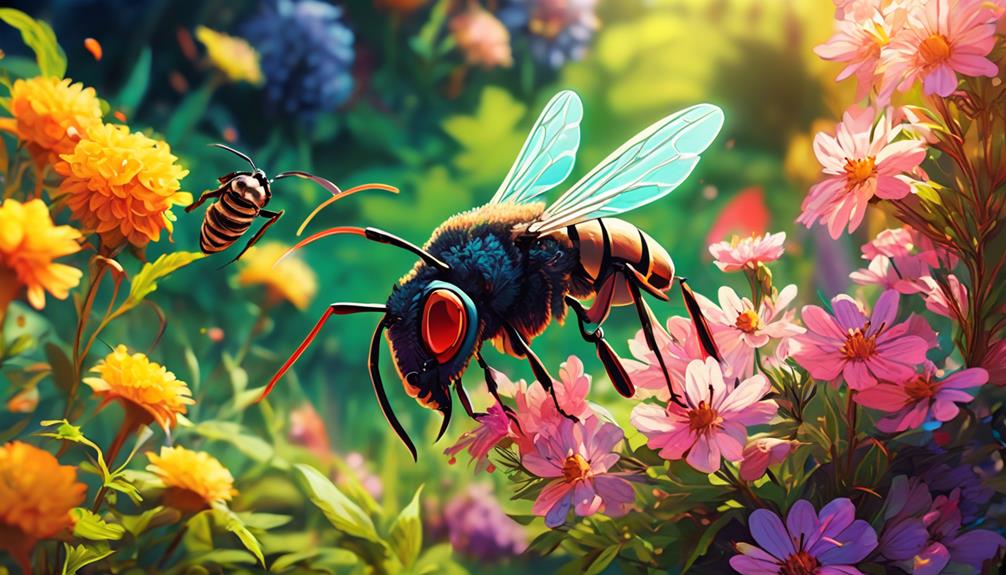
While mason bees are industriously pollinating plants, parasitic wasps are often lurking nearby, ready to exploit these hardworking bees in a fascinating, yet chilling display of nature's intricate relationships.
The wasps, you see, don't merely coexist with the bees. They're parasitoids, organisms that spend a significant portion of their life cycle in or on a single host organism, ultimately leading to the host's death.
Now, you might wonder what this interaction looks like. A female wasp locates a mason bee's nest, typically a hole in wood or hollow stem. She then lays her eggs inside, often right on top of the bee's own eggs or larvae. The wasp's young grow, feeding on the developing bees. It's a grim picture, but it's also a crucial part of biodiversity.
This relationship isn't just one-sided destruction though. While the wasps do pose a threat, their presence also exerts a form of natural selection pressure on the mason bees, driving them to evolve defensive strategies. So, in a strange way, these predatory wasps are helping to shape the future of mason bee populations.
Parasitic Wasps' Survival Tactics
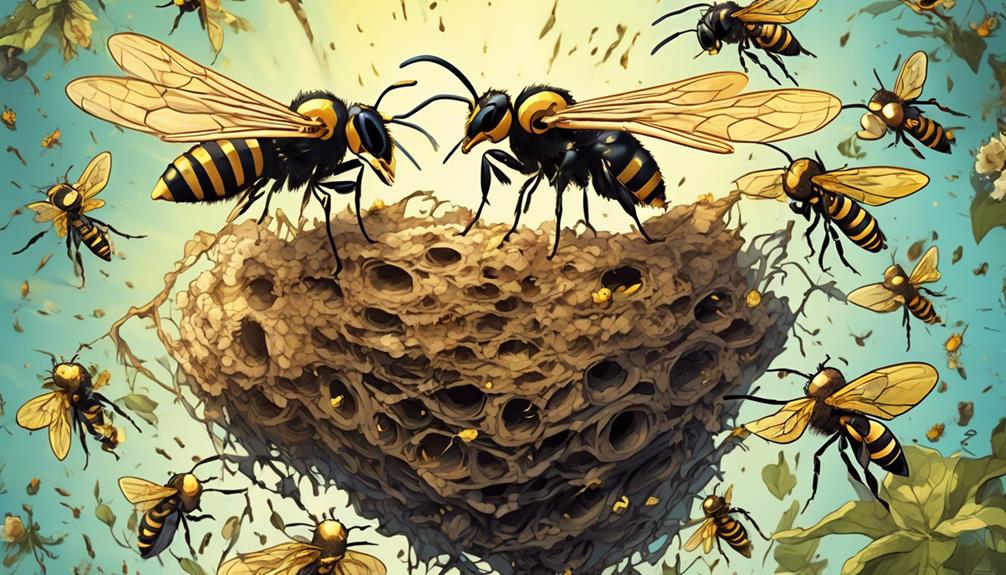
To fully appreciate the fascinating dynamics of this predator-prey relationship, it's imperative to understand the sophisticated survival tactics that parasitic wasps deploy against the mason bees.
Now, you might wonder how these wasps manage to infiltrate the bee's defenses. The wasp's survival strategy is a masterclass in evolutionary adaptation. The female wasp, armed with an ovipositor (a specialized organ designed for laying eggs), can penetrate the mason bee's nest, bypassing the protective mud barriers. She then lays her eggs directly into the bee's brood cells.
However, this isn't where the wasp's cunning ends. The parasitic wasp's larvae have a distinct advantage: they hatch faster than the mason bee's offspring. This gives them the upper hand, as they can consume the bee larvae before they're even fully formed, securing their own survival at the expense of the mason bees.
Moreover, these wasps also employ chemical warfare. They produce certain compounds that can inhibit the development of the mason bee larvae, thereby further ensuring their dominance within the bee's nest. These survival tactics highlight the ruthless precision with which nature operates, often bordering on the brutal, yet undeniably efficient.
Impact on Ecosystem Balance
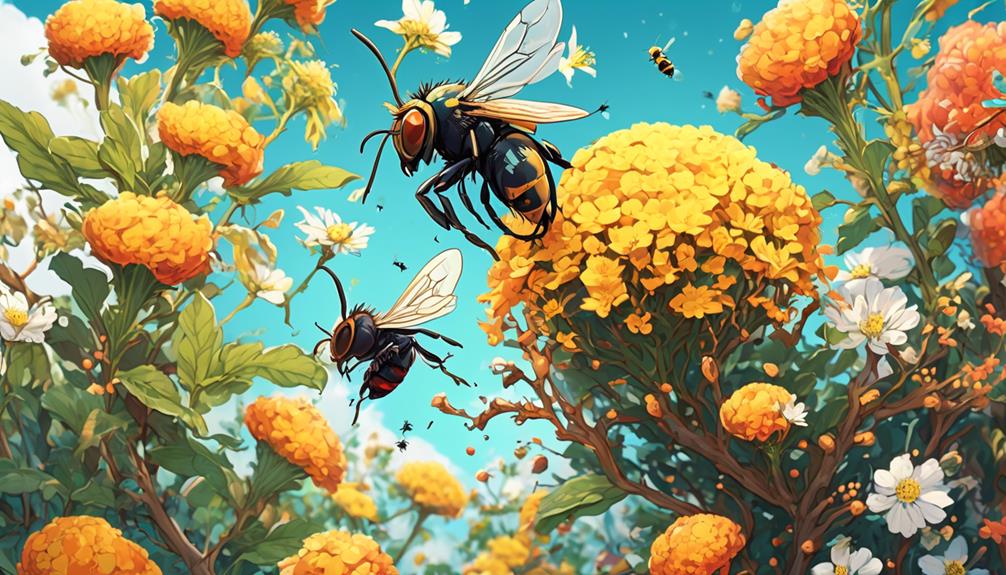
In considering the broader environmental picture, it's important to understand how this ruthless battle between parasitic wasps and mason bees can disrupt the delicate balance of our ecosystem. These wasps, by infiltrating bee nests and consuming their larvae, significantly reduce the population of mason bees. This may seem like an isolated issue, but it's not. Mason bees are critical pollinators, often more efficient than honeybees. Their decline directly affects plant reproduction, impacting the food supply for numerous species.
Impact | Mason Bees | Ecosystem |
|---|---|---|
Pollination | Exceptionally Efficient | Depends on Bee Population |
Food Supply | Affected by Wasp Predation | Linked to Plant Reproduction |
Population | Decreased by Parasitic Wasps | Balance Disrupted |
Ultimately, the predatory behavior of parasitic wasps doesn't just harm mason bees; it threatens the entire ecosystem. You see, every species in an ecosystem is interlinked, contributing to the overall balance. When one species declines significantly, it can trigger a domino effect, impacting other species and potentially leading to an ecosystem collapse. Thus, understanding and addressing this parasitic wasp threat is crucial for maintaining ecological balance.
Conclusion
So, do parasitic wasps eat mason bees? No, they don't. Instead, they lay their eggs in mason bees' nests. The hatching larvae then feed on the host's eggs or larvae.
This peculiar survival tactic affects not only the mason bee populations but also the overall ecosystem balance. Understanding these intricate interactions can help us better protect our biodiversity and maintain a healthy environment.

